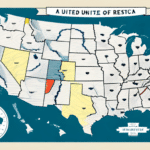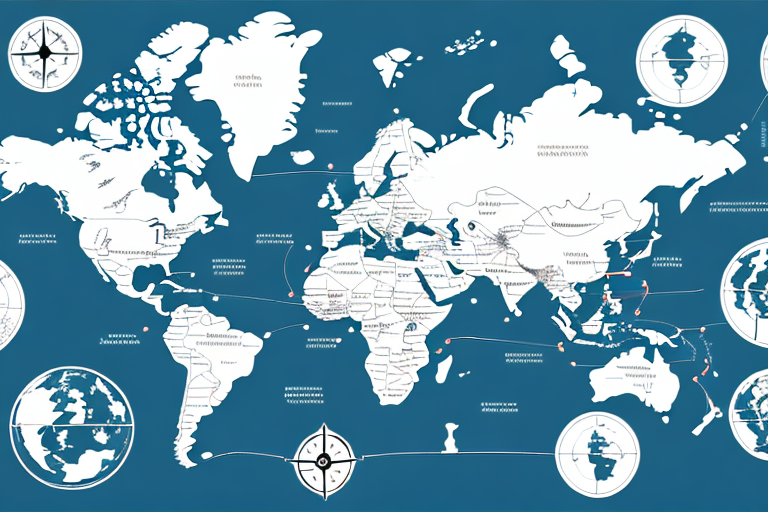As a business owner, having a clear understanding of FedEx shipping rates by zone is essential for managing your logistics and controlling expenses. Shipping costs can significantly impact your bottom line, and knowing the factors that influence these costs allows you to make informed decisions. In this article, we'll provide an in-depth analysis of FedEx shipping rates by zone, including how to calculate them, the importance of understanding your shipping zones, and effective strategies for negotiating better rates.
The Importance of Understanding Shipping Zones
Shipping zones are geographic areas designated by shipping carriers such as FedEx, UPS, or USPS to determine the distance a package must travel from the point of origin to its destination. These zones are typically based on the distance between two ZIP codes, with a higher zone number indicating a greater distance and, consequently, higher shipping rates. Understanding shipping zones is crucial because it directly influences both shipping costs and delivery times. For example, shipping to a nearby zone generally incurs lower costs and results in shorter delivery times compared to shipping to a more distant zone.
Additionally, shipping zones can vary based on the carrier. For instance, FedEx may categorize zones differently than UPS or USPS, impacting your overall shipping strategy. It's important to consult the specific carrier's zone chart to accurately estimate shipping costs. Some carriers also offer zone-based discounts for businesses that frequently ship to certain zones, providing an opportunity to reduce shipping expenses through strategic planning.
An Overview of FedEx Shipping Rates
FedEx shipping rates are determined by several factors, including package dimensions, weight, destination, and any applicable surcharges. The chosen delivery speed—such as overnight, two-day, or ground delivery—also plays a significant role in the overall cost. FedEx provides several online tools, including their shipping rate calculator, to help businesses estimate shipping costs based on these variables.
For businesses that regularly ship large volumes, FedEx offers discounted rates through their FedEx Advantage Program. These discounts can lead to substantial savings on monthly shipping bills. Moreover, FedEx caters to diverse shipping needs by offering various services, such as international shipping, freight shipping, and specialty shipping for items like hazardous materials or perishable goods. This variety ensures that both small and large businesses can find shipping solutions tailored to their specific requirements.
How to Calculate FedEx Shipping Rates by Zone
Calculating FedEx shipping rates by zone is straightforward using FedEx's online resources. The first step is to utilize the FedEx shipping rate calculator, where you can input your package dimensions, weight, origin and destination ZIP codes, and desired delivery speed to receive an estimated shipping cost.
FedEx also offers a zone locator tool that helps determine the destination zone based on the origin and destination ZIP codes. It's important to consider the type of package being shipped, as rates differ for envelopes, boxes, and other packaging types. Additionally, various shipping options—such as overnight, two-day, and ground shipping—have different rates and delivery times, so selecting the appropriate service is key to balancing cost and speed.
Determining Your Shipping Zone: A Step-by-Step Guide
To accurately determine your shipping zone for FedEx, follow these steps:
- Identify your destination ZIP code.
- Identify your origin ZIP code.
- Access the zone chart specific to your chosen FedEx service (e.g., Ground or Express).
- Locate the intersection point of your origin and destination ZIP codes on the zone chart to find the applicable shipping rate.
It's important to note that FedEx updates their zone charts annually to reflect changes in operational costs and infrastructure. Therefore, always verify the latest zone chart before shipping. Additionally, shipments to remote or rural areas may incur additional fees or longer delivery times, so factor these potential costs into your shipping strategy.
If you're uncertain about determining your shipping zone or need assistance with FedEx services, FedEx customer service is available 24/7 to provide support and answer any questions you may have.
Factors That Affect FedEx Shipping Rates by Zone
Several factors influence FedEx shipping rates by zone, including:
- Package Dimensions and Weight: Larger and heavier packages typically incur higher shipping costs. Accurately measuring and weighing your packages is essential to avoid unexpected fees.
- Shipping Service Type: Choosing faster delivery options, such as overnight or two-day shipping, increases the cost compared to standard ground shipping.
- Surcharges: Additional fees may apply for services like residential delivery, delivery area surcharges, or fuel surcharges, which can vary based on distance and other factors.
- Seasonal Demand: Rates can fluctuate during peak seasons, such as holidays, due to increased shipping volume and demand.
Moreover, FedEx offers various discounts and promotions throughout the year, which can help reduce shipping costs. For example, businesses that consistently ship large volumes may qualify for significant volume discounts. Staying informed about these offers and leveraging them can lead to substantial savings on shipping expenses.
Tips to Reduce Shipping Costs Based on Zones
Implementing strategies to reduce shipping costs can significantly impact your business's profitability. Here are several ways to minimize your shipping expenses based on zones:
- Optimize Shipping Destinations: Focus on shipping to destinations that are closer to your business to minimize distance and reduce costs.
- Use Regional Carriers: Partner with regional carriers that specialize in shorter delivery distances, as they often offer competitive rates for nearby zones.
- Optimize Packaging: Reduce the size and weight of your packages by using appropriately sized packaging materials. This can lead to lower shipping costs and less packaging waste.
- Consolidate Shipments: Combine multiple orders into a single shipment to benefit from bulk shipping rates and reduce overall costs.
- Negotiate with Carriers: Engage in negotiations with shipping carriers to secure better rates, especially if your business consistently ships high volumes to specific zones.
By strategically managing your shipping practices and utilizing the available tools and discounts, you can effectively lower your shipping expenses and enhance your business's bottom line.
How to Negotiate Better Shipping Rates with FedEx
Negotiating better shipping rates with FedEx can result in substantial savings for businesses that regularly ship large volumes. Here are steps to effectively negotiate with FedEx:
- Understand Your Shipping Volume: Have a clear understanding of your monthly or annual shipping volume, as higher volumes can provide leverage in negotiations.
- Analyze Current Shipping Costs: Review your current shipping expenses to identify areas where costs can be reduced.
- Contact FedEx Sales Representatives: Reach out to FedEx sales representatives to discuss your shipping needs and explore available discount options.
- Consider Long-Term Contracts: Committing to a long-term shipping contract can often result in better rates and additional benefits.
- Leverage Competitive Offers: Use quotes from other carriers to negotiate more favorable rates with FedEx.
It's also beneficial to stay informed about FedEx's promotions and seasonal discounts, which can provide additional opportunities for cost savings. Building a strong relationship with your FedEx account manager can lead to more personalized shipping solutions and better rate negotiations tailored to your business's specific needs.
Common Mistakes to Avoid When Shipping by Zone
Properly managing shipping by zone requires attention to detail. Avoid the following common mistakes to ensure accurate zone assignments and optimal shipping costs:
- Incorrect ZIP Codes: Using incorrect or outdated ZIP codes can result in incorrect zone assignments and higher shipping rates. Always verify ZIP codes before shipping.
- Neglecting Volume Discounts: Failing to take advantage of available volume discounts can lead to unnecessary shipping expenses. Ensure you are enrolled in programs that offer discounts based on your shipping volume.
- Underestimating Package Size and Weight: Accurately measuring and weighing your packages is essential to avoid additional fees for overweight or oversized shipments.
- Poor Packaging: Inadequate packaging can result in damaged goods during transit, leading to returns and increased costs. Use appropriate packaging materials and follow FedEx guidelines for packing.
- Ignoring Transit Times: Underestimating transit times can lead to rushed shipments, resulting in higher costs. Plan your shipping schedule to accommodate necessary delivery times without incurring expedited shipping fees.
By avoiding these common mistakes, you can maintain accurate shipping zone assignments, minimize costs, and ensure efficient delivery of your packages.
Best Practices for Managing FedEx Shipping Rates by Zone
Effectively managing FedEx shipping rates by zone involves a combination of regular review, strategic planning, and utilization of available tools and discounts. Here are some best practices to consider:
- Regularly Review Shipping Rates: Periodically assess your shipping rates to ensure they remain competitive and reflect any changes in your shipping patterns or business needs.
- Track Shipping Expenses: Monitor your shipping expenses and volumes to identify trends and areas where costs can be optimized. Tools like FedEx's shipping report tools can help with this analysis.
- Monitor Carrier Performance: Evaluate the performance of FedEx in terms of delivery times, package handling, and customer service to ensure you are receiving quality service that justifies the costs.
- Optimize Package Dimensions and Weight: Accurate measurement and packaging can prevent unexpected surcharges and reduce shipping costs.
- Utilize FedEx Online Tools: Take advantage of FedEx's online tools, such as the shipping rate calculator and rate sheets, to stay informed about the latest rates and fees.
Implementing these best practices will help you maintain control over your shipping costs, ensure accurate rate calculations, and enhance the efficiency of your shipping operations.
Comparing FedEx Shipping Rates to Other Carriers
Comparing FedEx's shipping rates to those of other carriers is essential to determine the most cost-effective and reliable shipping option for your business. When making comparisons, consider the following factors:
- Shipping Times: Evaluate the delivery speeds offered by FedEx compared to other carriers like UPS and USPS to match your business's delivery expectations.
- Tracking Capabilities: Assess the quality and transparency of package tracking features across different carriers to ensure you can monitor shipments effectively.
- Package Insurance: Compare insurance options and coverage limits to protect your valuable shipments adequately.
- Reliability: Research each carrier's reliability in terms of on-time deliveries and package handling to ensure consistent service quality.
- Cost Efficiency: Analyze the overall cost, including base rates, surcharges, and potential discounts, to determine which carrier offers the best value for your business needs.
One of FedEx's primary advantages is its extensive network of drop-off locations. With over 2,000 FedEx Office locations and thousands of drop boxes across the United States, it's convenient for businesses to access shipping services. Additionally, FedEx provides a variety of shipping options, including same-day, overnight, and ground shipping, catering to different delivery speed requirements.
FedEx is also renowned for its exceptional customer service, offering dedicated support representatives and comprehensive online resources to assist businesses with their shipping needs. When comparing to other carriers, consider how FedEx's customer service and additional tools like online shipping tools can enhance your shipping experience and support your business operations.
The Future of FedEx Shipping Rates and Zones
The future of FedEx shipping rates and zones will likely continue to evolve in response to various industry trends and external factors. Key considerations include:
- Fuel and Transportation Costs: Fluctuations in fuel prices and transportation expenses can impact shipping rates. FedEx may adjust their rates to reflect these changes, affecting overall shipping costs.
- Automation and Technology: Advances in automation and technology can lead to more efficient shipping processes, potentially reducing costs and improving delivery times. Technologies like AI-driven logistics, autonomous vehicles, and improved tracking systems will likely play a significant role.
- Sustainability Initiatives: Increasing demand for sustainable and eco-friendly shipping options may influence FedEx's rate structures. Implementing electric fleets, sustainable packaging, and carbon offset programs can position FedEx as an environmentally responsible carrier and may affect pricing strategies.
- Global Commerce Trends: As global e-commerce continues to grow, FedEx may adjust their international shipping rates and zones to better serve expanding markets and address new logistical challenges.
Businesses should stay informed about these trends to anticipate changes in shipping rates and adapt their strategies accordingly. By remaining proactive and leveraging FedEx's evolving tools and services, businesses can continue to optimize their shipping operations and maintain cost-effectiveness in an ever-changing market.
In conclusion, understanding and effectively managing FedEx shipping rates by zone is essential for any business that regularly ships packages. By comprehensively analyzing shipping costs, leveraging available tools and discounts, and staying informed about industry trends, businesses can enhance their shipping strategies, reduce costs, and provide reliable and efficient service to their customers. Embracing sustainable shipping practices and adopting new technologies will further ensure your shipping operations remain competitive and environmentally responsible in the future.
One of the major trends in the shipping industry is the increasing demand for sustainable and eco-friendly shipping options. FedEx has already taken steps towards this by introducing electric and hybrid vehicles in their fleet and implementing sustainable packaging solutions. According to FedEx's sustainability reports, they aim to achieve carbon-neutral operations by 2040. As consumers become more environmentally conscious, it is likely that businesses will need to prioritize sustainable shipping options to remain competitive in the market.






















